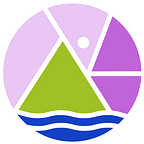What’s in a Word? The Value of Journaling in Nature
What’s in a word? As we close out our celebration of Black History Month and both those that came before us and those that will come after, t’s hard not to reflect on the importance of our words. Written word, oral word, words that craft our stories and reflect our history, and the words that promise our future.
The words of Black environmentalists come to mind. From Solomon Brown, to Dr. Wangari Maatha, to MaVynne “Beach Lady” Betsch.
“Hello. This is the Beach Lady. If you’re getting this message, it may be because I have turned into a butterfly and floated out over the sand dune.” — MaVynee Betsch
At Environmental Learning for Kids, we take our words seriously. Our words help to inspire, educate, and transform our next generation of environmental stewards.
One way that we do that is by encouraging journaling, especially in nature. Journaling in any place, is our own individual chance to leave behind our own pieces of history. To remind ourselves of where and what we’ve been, or to give others a peek inside. Journaling in nature specifically, is healing. It’s a chance to slow down, catch our breath, and connect with our roots. It looks like a lot of things from freeform, to poems, or even doodles if that’s your thing.
But isn’t a journal that embarrassing thing you hid under your bed as a kid in fear of your siblings finding and reading aloud?
Well, yes. But also no. A journal can take so many forms, you just have to find a place to start. Here at ELK, we use the act of journaling to help young people to connect with themselves, their legacies, and an outdoors that they have for far too long, been told wasn’t for them. Through journaling, students reflect on and identify pieces of science and nature that they can really connect with and want to explore more, as they are thinking about their post-secondary journey to come.
So where does one begin? Here’s prompt a from ELK Student Coordinator, Ronika Kone, to get your thoughts swirling and your journal started:
Visualize a place in nature.
What does it sound like?
What is the temperature?
What can you see?
Can you smell anything?
What does this moment remind you of?
And that’s it. We’ll let you get to it now. It just may be your poignant words our next generation will be reflecting on.
About Environmental Learning for Kids (ELK): Environmental Learning for Kids (ELK) is a Denver-based, nonprofit organization established in 1996 to address the growing need to introduce and educate Colorado’s racially diverse youth about science, leadership, and careers. Twenty-six years later, ELK continues to provide strong educational support, good role models, and opportunities for positive community action for youth, helping them to become engaged, productive, and successful members of society. Learn more at elkkkids.org.
About the Author: Kristina Gray received her Bachelor of Art degree in Political Science from MSU Denver in 2011. She has been a part of the nonprofit sector for over 10 years. She is an alumnus of the Corporation for National and Community Service’s AmeriCorps VISTA program and the Hispanic Chamber Foundation’s Aspiring Leaders Program, Class of 2017. Kristina spends her free time advocating for justice and equity for all of Colorado’s youth & families, and going on adventures with her husband and young daughter. Contact Kristina @kopre@elkkids.org.
